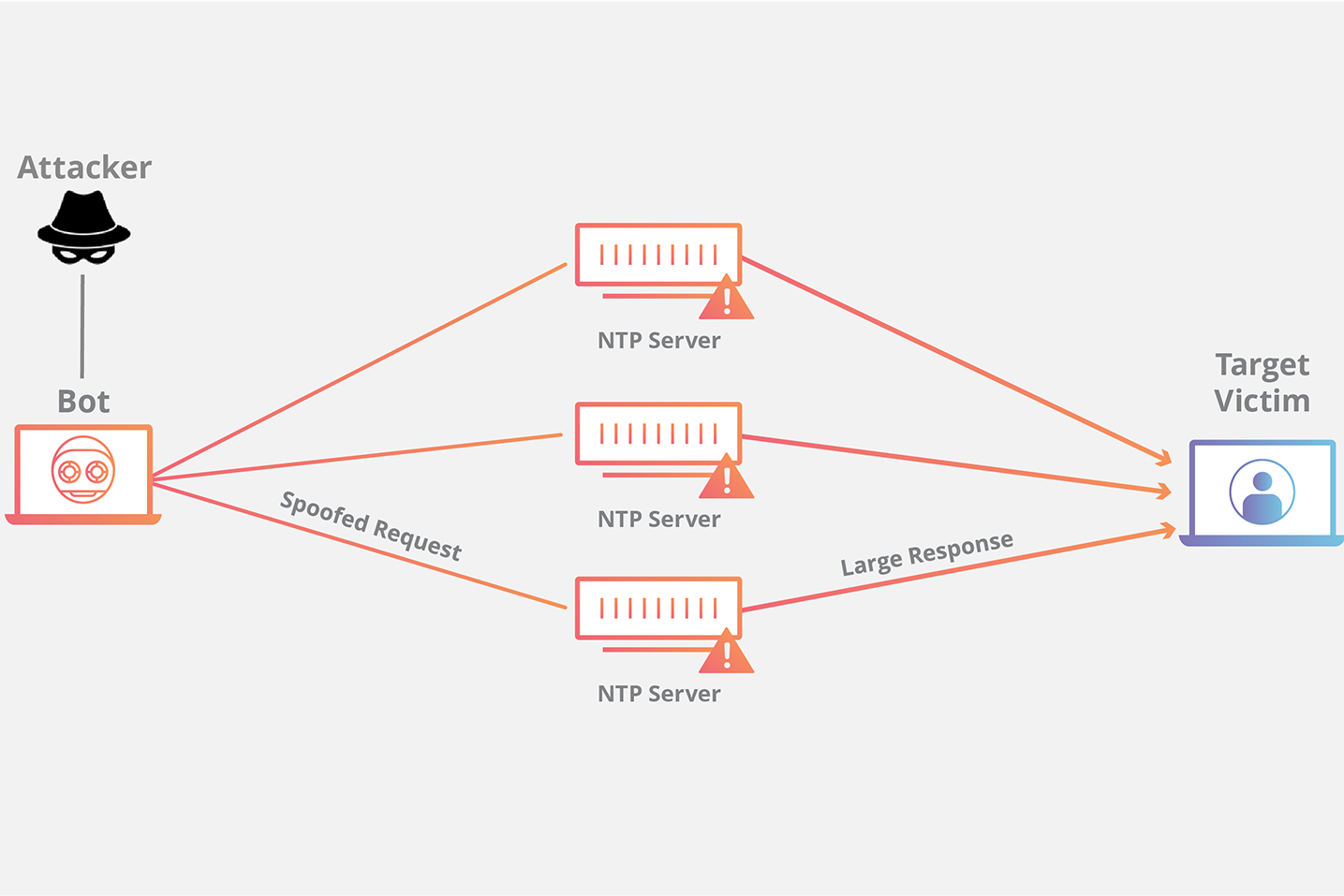NTP DDoS#
An NTP amplification attack is a reflection-based volumetric distributed denial-of-service (DDoS) attack in which an attacker exploits a Network Time Protocol (NTP) server functionality in order to overwhelm a targeted network or server with an amplified amount of UDP traffic, rendering the target and its surrounding infrastructure inaccessible to regular traffic.
How it work?#
All amplification attacks exploit a disparity in bandwidth cost between an attacker and the targeted web resource. When the disparity in cost is magnified across many requests, the resulting volume of traffic can disrupt network infrastructure. By sending small queries that result in large responses, the malicious user is able to get more from less. When multiplying this magnification by having each bot in a botnet make similar requests, the attacker is both obfuscated from detection and reaping the benefits of greatly increased attack traffic.
DNS flood attacks differ from DNS amplification attacks. Unlike DNS floods, DNS amplification attacks reflect and amplify traffic off unsecured DNS servers in order to hide the origin of the attack and increase its effectiveness. DNS amplification attacks use devices with smaller bandwidth connections to make numerous requests to unsecured DNS servers. The devices make many small requests for very large DNS records, but when making the requests, the attacker forges the return address to be that of the intended victim. The amplification allows the attacker to take out larger targets with only limited attack resources.
NTP amplification, much like DNS amplification, can be thought of in the context of a malicious teenager calling a restaurant and saying “I’ll have one of everything, please call me back and tell me my whole order.” When the restaurant asks for a callback number, the number given is the targeted victim’s phone number. The target then receives a call from the restaurant with a lot of information that they didn’t request.
The Network Time Protocol is designed to allow internet connected devices to synchronize their internal clocks, and serves an important function in internet architecture. By exploiting the monlist command enabled on some NTP servers, an attacker is able to multiply their initial request traffic, resulting in a large response. This command is enabled by default on older devices, and responds with the last 600 source IP addresses of requests which have been made to the NTP server. The monlist request from a server with 600 addresses in its memory will be 206 times larger than the initial request. This means that an attacker with 1 GB of internet traffic can deliver a 200+ gigabyte attack - a massive increase in the resulting attack traffic.
An NTP amplification attack can be broken down into
four steps#
The attacker uses a botnet to send UDP packets with spoofed IP addresses to a NTP server which has its monlist command enabled. The spoofed IP address on each packet points to the real IP address of the victim.
Each UDP packet makes a request to the NTP server using its monlist command, resulting in a large response.
The server then responds to the spoofed address with the resulting data.
The IP address of the target receives the response and the surrounding network infrastructure becomes overwhelmed with the deluge of traffic, resulting in a denial-of-service.

As a result of the attack traffic looking like legitimate traffic coming from valid servers, mitigating this sort of attack traffic without blocking real NTP servers from legitimate activity is difficult. Because UDP packets do not require a handshake, the NTP server will send large responses to the targeted server without verifying that the request is authentic. These facts coupled with a built-in command, which by default sends a large response, makes NTP servers an excellent reflection source for DDoS amplification attacks.
